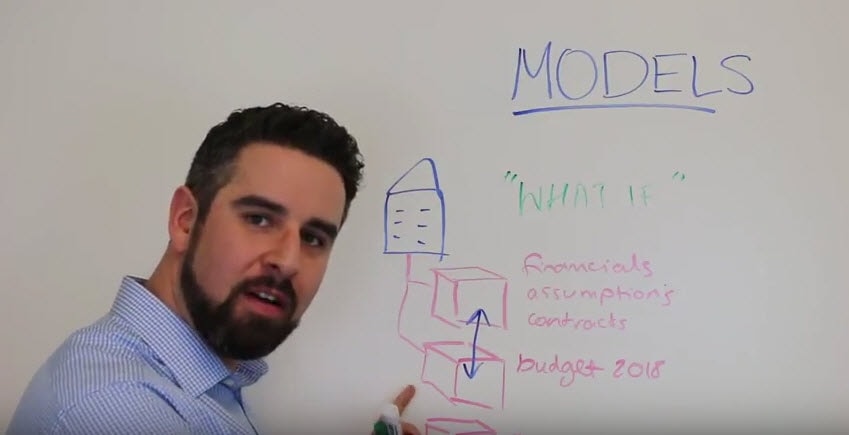In today’s Whiteboard Wednesday we hear from Arik Kogan, Director of Product Management, as he covers the impact of models within the Investment Solutions Suite at MRI Software. Arik covers the ways that MRI Software’s Investment Software uses models to help investors with real estate financial planning and analysis, risk modeling and “what if” analyses. You’ll get an inside view of how a particular asset’s model rolls up into a larger real estate investment portfolio fund.
Video Transcription
Arik Kogan: Hi, I’m Arik Kogan and today’s Whiteboard Wednesday I’ll be talking to you about models. Now, models are a concept that we use in the investment solutions or investment modeling product suite. It’s essentially the cornerstone of what this solution can provide to someone who’s involved in financial planning and analysis, strategy and risk analysis, budgeting and so forth. Obviously, within the product, we model assets, and in this case, real estate assets. For each and every asset that we have, in the product, we have a live model.
Now, I’ll talk to you a little bit about why it’s called live. Let’s first talk about what is a model. This particular property that we have in the system has a model. In that model, we capture a lot of information. We capture things like financials, assumptions, contracts, like leases, and debt contracts. All the information that pertains to that particular property is captured in its base model, which we call live. The reason we call it live is because this model is constantly being updated with new financials, as you close your books, new contract terms as the rental changes, new assumptions as interest rates change, or growth rates change, and so on. This is all captured within a model.
Now, the simplest example of leveraging models in the system is when you do a budget. What we have here is another model. It still represents all the information about this particular property. Now, we’ve captured here our budget data for a particular year, let’s say it’s 2018 budget. This model will have all the same information that this model has. However, the budget information is locked down for 2018. Now, you have the ability to bring updated actions into this particular model and compare them to the budget information that you have in this model. Now have the ability to do reporting that compares these two models against one another. You can see your budget versus actual as you’re moving through the year.
That’s a simple use of models, but within the investment modeling solution suite, we take using models to a whole new level, and that’s for the purpose of delivering what-if scenarios. Not only have I made assumptions in order to produce my budget, but I might have a whole bunch of scenarios that I want to test and play around with. Maybe I want to look at a very optimistic view of this assets feature, or very pessimistic view of this assets feature. The way to do that is to build out a lot of different models. Each of those models can have different nuanced information about that particular asset.
I might build another model over here. In this model, I might increase interest rates. Or I build another model and rather than changing interest rates, I increase cap rates, let’s say, for the valuation of that asset. Essentially, because each model is just another variation of any other model, you can build an unlimited number of versions or views of that particular asset. Now, if you bring our fund modeling solution into the equation, you now are able to navigate all the way up from the asset, all the way up to a fund or portfolio. This portfolio might have lots of assets, that all roll up into this particular portfolio. That portfolio will also have a model or a 100 models or a 1000 models.
At this level, my what-if scenarios change. I can build a model where I sell some assets, I buy some other assets. I can build a model where I go and refinance a whole bunch of loans. I can build models where I flex interest rates, cap rates, and other assumptions across the entire portfolio or on specific segments of the portfolio. I can say, “Look, I just want to increase interest rates in this particular region, in this particular asset class.”
Because this asset has a scenario model, and the portfolio has a scenario model, all that information will consolidate up and you now have the ability to view different variations of the portfolio as a whole, and run all of your performance reports on that portfolio and assess whatever metrics it is that you want to assess, in order to deliver a strategic plan to your executives, that includes all of these assumptions and transactions that you think are going to happen over the next 1, 2, 5, 10, 15 years. That’s it for this Whiteboard Wednesday. You now know everything there is to know about models.
